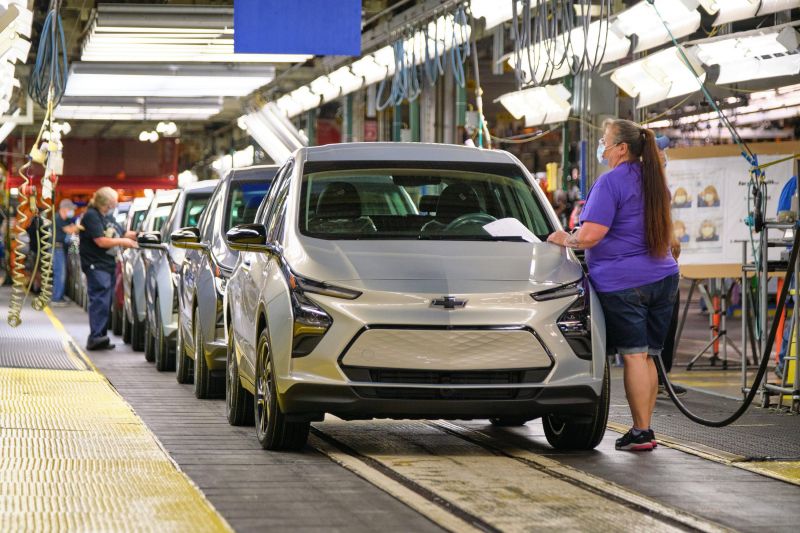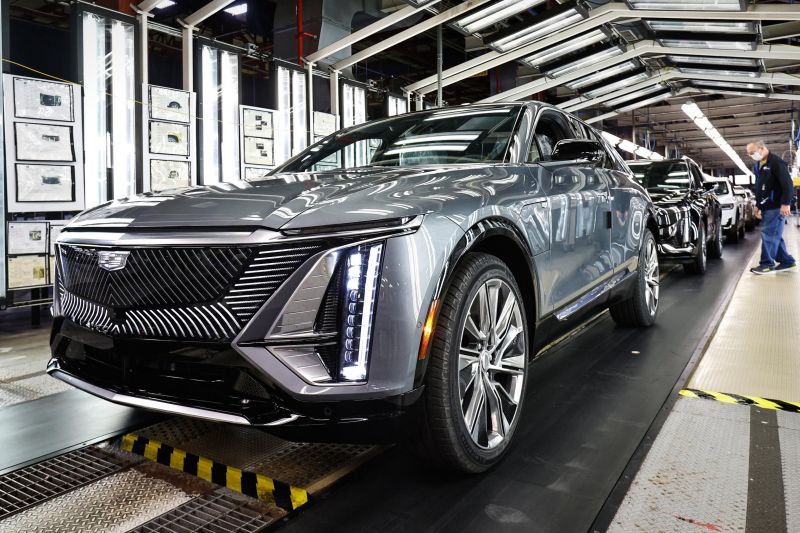Following on from Ford and Stellantis, GM has now reached a tentative contract with the United Auto Workers (UAW) union in the US.
Reports from various sources, including Automotive News and Reuters, indicate GM and the UAW reached a tentative agreement on Monday morning, US time.
Once the deal is formally announced, the UAW will pause its picketing and strike activities against GM. The contract will then be voted on by the roughly 46,000 GM employees represented by the UAW.
At the time of writing, neither the UAW or GM has confirmed a deal has been reached, and as such details about the new contract have yet to be formally confirmed, but it will likely closely follow the deals reached with Ford and Stellantis.
Both of those contracts feature 25 per cent pay rises over the next four years, recommence cost-of-living adjustments, allow new hires to get to their top wage tier within three years, and bring battery plant workers into the fold. They also force the automakers to convert temporary workers into full-time employees within one year of starting, and give temporary workers access to profit sharing.
The new contracts also give the union the right to strike over plant closures, and the right to strike over product and investment commitments.
According to the UAW, the lowest paid temporary workers at Ford and Stellantis, stand to see pay increases of at least 150 per cent immediately upon ratification. All workers covered by the contract will all enjoy a ratification bonus, as well as immediate pay increases of at least 11 per cent.
Stellantis’ agreement with UAW will see the Belvidere plant outside of Chicago brought back online for a new “mid-size pickup truck”. It was idled in February when production of the Jeep Cherokee ended.
Even with tentative agreements in place with the domestic Big Three, the prospect of more strike action in the near future isn’t fully off the table.
All three agreements still need to be ratified. This is usually a formality, but according to Automotive News there is some online chatter amongst UAW members about voting against the deals.
Some members are apparently against the deals as they don’t achieve the union’s originally stated goals of a 40 per cent wage increase, 32-hour work week, retirement benefits for all workers, and health care funding for retirees.
It’s unclear at this stage how significant opposition is within the UAW rank and file. Only a simple majority is required to ratify each deal.
Under the leadership of Shawn Fein, the UAW launched a “stand up” strike 46 days ago when it was unable to reach a satisfactory deal with either GM, Ford or Stellantis.
In a break with long-standing tradition, where the union negotiated with one automaker at a time, the UAW decided to strike against all three simultaneously. Instead of shutting down all factories, though, the UAW started by only picketing one factory from each car company.
As the weeks rolled on, workers at more factories were told to walk off the job, with plant selection based on how well, or poorly, negotiations were going with each automaker.
This strategy, it’s said, was designed to give the UAW maximum leverage and stretch its strike compensation fund, while avoiding the huge economic cost and potential negative publicity of shutting down one automaker or the entire sector.


